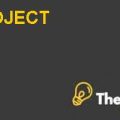BUSINESS PROCESSES Case Solution
Moreover, under the particular phase, the firm also manages the cycle stock, which is the actual demand unit in the market. The make phases allows the organization to manage the cycle stock and also maintains the safety stock level by offering the accurate market insight, leading to the efficient production of the cycle stock. In general, the cycle stock is the actual demand production unit in the market, which if gets short, due to any uncertain condition, is covered by the Safety stock.
Also, under the Make process, the concept such as lean manufacturing is used and considered, that allows the organization to produce the effective and efficient products, by reducing the cost and waste along with the defaults. Such improves the overall make process of the organization, leading to high standard production (Adamides, 2008).
Moving forward, under the Make phase, the major decision are under taken about the production of the products and services, the option under consideration includes; the make-to-order and Make-to-stock. It has been determined, that both the options can be used by the organization depending on the product type and the demand in the market. The make to order strategy allows the organization to produce the products on the basis of the customer orders. Such strategy can be used for the fragile products or highly sensitive product, to minimize the damage and improve the efficiency.
However, the made to stock strategy, outlines the manufacturing of the product to meet the demand level in the market, irrespective of the actual orders for the products. Such strategy is useful for the commodity products, that are frequently consumed, hence can be produced on the general demand in the market.
Perhaps, while pursuing the made to stock and made to order strategies, it is important for the organization to understand the theory of constraint that outlines the dealing with the constraint of the bottlenecks that hinder the performance of the product in the assembly line. Since it is understood, that there are different activities involved in the production of the product, it is important to understand the hindering factors that may create delay in overall production process. Such dealing leads to the effective management of the bottlenecks, improving the overall performance of the system (Cagliano, 2004).
Apart from this, under the make phase, the organization also needs to decide over the push pull boundaries. It is due to the fact, that ceratin products may be consumed at the faster rate than other products, creating shortage in market, or some products may be consumed at slower rate, creating the high inventory stocks leading to high inventory tied up cost. Hence the organization, under the business process has to decide whether to pursue the pull strategy or push, in order to keep the operations at the optimum level.
Furthermore, the make phases also entails the manufacturing and the lots size of the product. This depicts the manufacturing and delivery of the ceratin products at specified dates. Such determination and analysis of the lots sizes are crucial for the management, since it involves the raw material and the cost associated with the inventory storage.
Lastly, while considering the make phase of the product, it is important for the organization and the management to understand the bullwhip effect while manufacturing the product. It is due to the fact, that the presence of the bullwhip effect in the manufacturing process, makes the organization to produce more than the actual demand, leading to high inventory storage and ultimately the tied up cost that results in losses and inaccurate and inefficient operations (Li, 2009)............
This is just a sample partical work. Please place the order on the website to get your own originally done case solution.













